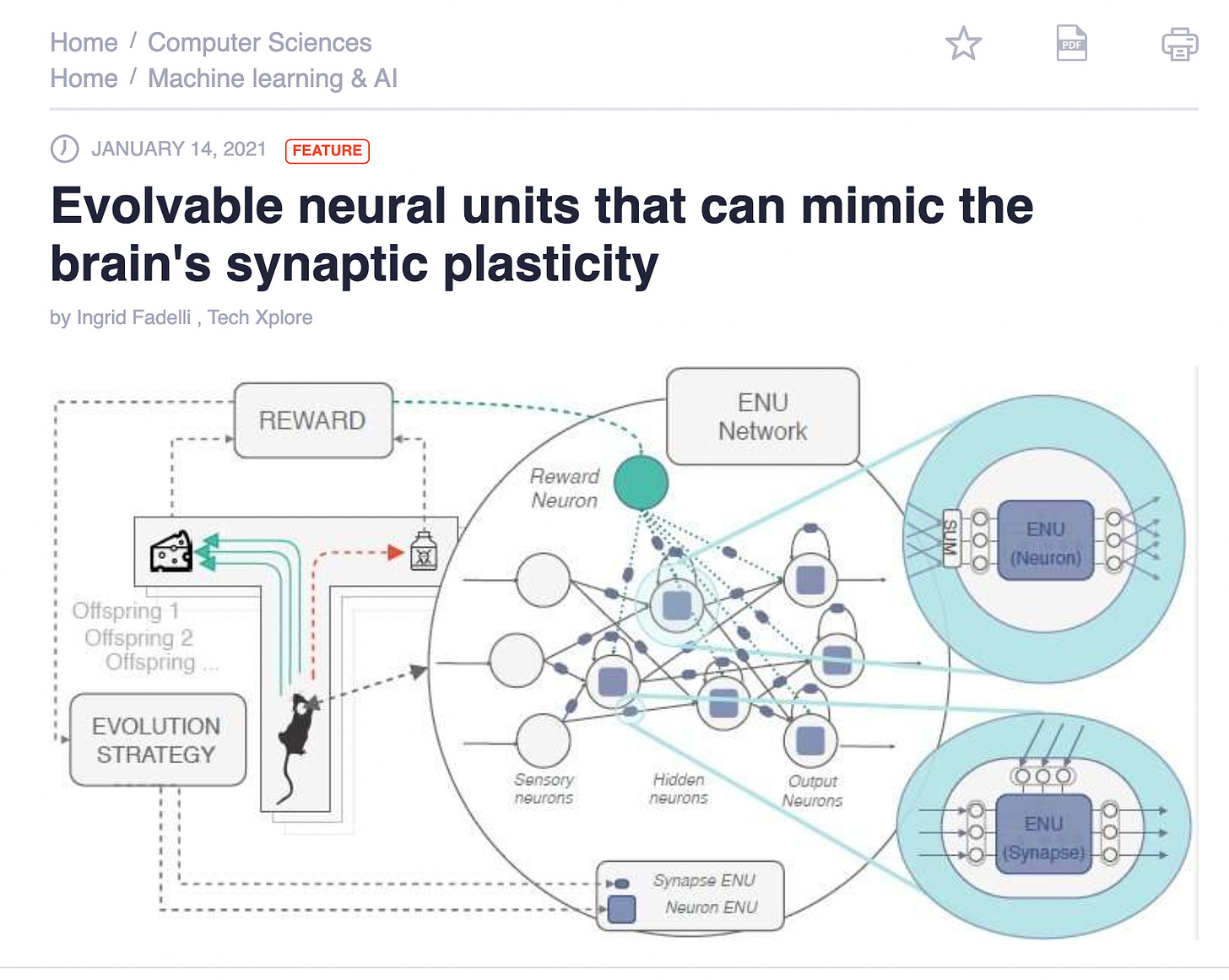So JimB came in and dropped the hammer. The link hammer. I decided to just pop his generous link-shares into a post for your viewing displeasure. As you know, I have zero ground to assert ANYTHING about the graphene, nano, bio, electric, wireless, 5G, 6G, [insert thing here] world.
I AM MAKING EXACTLY ZERO ASSERTIONS.
I’m simply saying that IT‘S WORTH LOOKING AT.
Because IF it’s a thing, IT’s A BFD.
I wish the gal in this YouTube video had combed her hair. Not because I care AT ALL, (you should see my hair right now)….but in anticipation of the assholes that won’t hear what she is saying because they are too busy judging her flyaways.
The following is an abundant cache of studies and articles that in my humble opinion are relevant. I’m not going to give commentary, but everything is linked for your researching pleasure.
I was going to take a research break, but I feel that we are on a bit of a precipice. I’m not sure that evidence will wake anyone that hasn’t already….but this Substack is my humble effort to contribute to that cause.
This is not crazy tin foil conspiracy bullshit….it’s reasonable consideration.
Just in case you missed the preamble:
The Graphene Chronicles
Here’s another stack to conspiring about graphene…
GRAPHENE FAMILY NANOMATERIALS (GFNs) can be delivered into bodies by intratracheal instillation, oral administration, intravenous injection, intraperitoneal injection and subcutaneous injection. GFNs can induce acute and chronic injuries in tissues by penetrating through the blood-air barrier, blood-testis barrier, blood-brain barrier, and blood-placenta barrier etc. and accumulating in the lung, liver, and spleen etc.
Here are the recent links JimB shared:
Graphene Antennas Would Enable Terabit Wireless Downloads
March 5, 2013
A paper describing the design and related calculations will appear in IEEE’s Journal of Selected Areas in Communication later this year. The paper builds on other research on graphene’s electronic properties, but is the first to calculate optimal configurations of the antennas.
Nose-to-Brain Translocation and Cerebral Biodegradation of Thin Graphene Oxide Nanosheets
SEPT 23, 2020
Understanding the interactions of graphene oxide (GO)-based materials with biological systems is critical due to the potential applications of these materials. Here, we investigate the extent to which single- to few-layer GO sheets of different controlled lateral dimensions translocate from the nose to the brain following intranasal instillation.
This study adds to growing awareness regarding the fate of graphene-based materials in biological systems.
Remotely controlled electro-responsive on-demand nanotherapy based on amine-modified graphene oxide
SEPTEMBER 2022
This study focuses on the development of a new electric field responsive graphene oxide (GO) nanoparticle system for on-demand drug delivery. Today, GO is an attractive option adopted in various biological applications for its exclusive features such as flexibility, conductiveness, cost-effectiveness, and external stimuli-responsive nature.
Here, we have demonstrated how to control the drug release rate remotely with a handy mobile phone, with zero passive release at idle time.for synergistic dual drug delivery.
Development of dendritic-network-implementable artificial neurofiber transistors
SEPTEMBER 23, 2021
The researchers created an artificial neural network system comprising 100 synapses using the artificial neurofibers and verified the stability of the device via speech recognition experiments. The proposed neural network was shown to achieve a recognition accuracy of 88.9% after training with speech data.
Dr. Jung Ah Lim and Dr. Hyunsu Ju note that "the novel artificial neurofiber device is an original technology that can be used to create large-scale, energy-efficient (~2 pJ/signal), and highly reliable artificial neural networks similar to that of the brain. Our artificial neurofiber device is flexible and may be used in AI-enabled wearable electronics made of semiconductor materials or in robotics."
Evolvable neural units that can mimic the brain's synaptic plasticity
JANUARY 14, 2021
Researchers at Korea University have recently tried to reproduce the complexity of biological neurons more effectively by approximating the function of individual neurons and synapses. Their paper, published in Nature Machine Intelligence, introduces a network of evolvable neural units (ENUs) that can adapt to mimic specific neurons and mechanisms of synaptic plasticity. (source)
Lighting up artificial neural networks with optomemristors
APRIL 27, 2022
A team of international scientists have performed difficult machine learning computations using a nano-scale device, named an "optomemristor."
The chalcogenide thin-film device uses both light and electrical signals to interact and emulate multi-factor biological computations of the mammalian brain while consuming very little energy.
Neuromorphic memory device simulates neurons and synapses
MAY 20, 2022
Professor Keon Jae Lee explained, "Neurons and synapses interact with each other to establish cognitive functions such as memory and learning, so simulating both is an essential element for brain-inspired artificial intelligence. The developed neuromorphic memory device also mimics the retraining effect that allows quick learning of the forgotten information by implementing a positive feedback effect between neurons and synapses."
Remotely controlled electro-responsive on-demand nanotherapy based on amine-modified graphene oxide
SEPTEMBER 2022
This study focuses on the development of a new electric field responsive graphene oxide (GO) nanoparticle system for on-demand drug delivery. Today, GO is an attractive option adopted in various biological applications for its exclusive features such as flexibility, conductiveness, cost-effectiveness, and external stimuli-responsive nature.
Here, we have demonstrated how to control the drug release rate remotely with a handy mobile phone, with zero passive release at idle time.for synergistic dual drug delivery.
Fiery response: 'Siglec-14' receptors on human macrophages detect carbon nanotubes and provoke inflammation
APRIL 6, 2023
Carbon nanotubes (CNTs) have become a mainstay of the field of nanotechnology. Finding innovative applications across materials science, electronics, and medicine, CNTs have garnered a lot of attention from researchers in recent years. However, the International Chemical Secretariat (ChemSec) has moved to flag CNTs on the "Substitute It Now!" database of chemicals likely to be restricted for use. In fact, due to their persistence in nature and potential toxicity to humans, ChemSec has proposed that adequate assessments of CNTs' risk to human health are urgently needed.
Following their entry into the body, and much like asbestos, CNTs are targeted by the immune system and preferentially engulfed by macrophages. The ensuing inflammatory response—involving inflammasome and interleukin-1β (IL-1β) secretion—can progress to chronic inflammation, fibrosis, and even mesothelioma, as seen in rodent models. Unfortunately, how human macrophages recognize CNTs has remained a mystery.
A New Way to Covalent Crystals
APRIL 13, 2023
The authors demonstrate this with a selection of building blocks, just the sorts of things you’d pick for making such things (with the sorts of geometries that people use to make metal-organic frameworks as well).
On inspection during crystallization, it appears that amorphous solids are produced first, but these gradually convert over to single crystals on further “aging” and more chances for reversibly remaking the bonding framework. The crystals that result seem to have a layer of gorp on them from the hydrophobic-conjugated amino acid species that forms the micelles, but that stuff may also be assisting in the crystal formation by altering the concentrations of the various species at the crystal surfaces. Indeed, changing the hydrophobic character of the amino acid conjugates altered the crystallization behavior quite a bit, which changing the amino acid head groups didn’t make much difference.
So yet another example of how odd crystallization behavior can be, and how many different ways exist to regulate it. Now to see what some of these newly available solids might be able to do. . .
Neural networks on photonic chips: Harnessing light for ultra-fast and low-power artificial intelligence
MAY 2, 2023
"The advantages of photonic neural networks have long been known, but one of the missing pieces to fully exploit their potential was network training.. It is like having a powerful calculator, but not knowing how to use it. In this study, we succeeded in implementing training strategies for photonic neurons similar to those used for conventional neural networks. The photonic 'brain' learns quickly and accurately and can achieve precision comparable to that of a conventional neural network, but faster and with considerable energy savings. These are all building blocks for artificial intelligence and quantum applications," adds Andrea Melloni, Director of Polifab the Politecnico di Milano micro and nanotechnology center.
Growth of self-integrated atomic quantum wires and junctions of a Mott semiconductor
MAY 03, 2023
Continued advances in quantum technologies rely on producing nanometer-scale wires. Here, we discover a simple method to fabricate atomic-scale wires with various arrangements, including stripes, X-junctions, Y-junctions, and nanorings. Single-crystalline atomic-scale wires of a Mott insulator, whose bandgap is comparable to those of wide-gap semiconductors, are spontaneously grown on graphite substrates by pulsed-laser deposition. These wires are one unit cell thick and have an exact width of two and four unit cells (1.4 and 2.8 nm) and lengths up to a few micrometers. We show that the nonequilibrium reaction-diffusion processes may play an essential role in atomic pattern formation. Our findings offer a previously unknown perspective on the nonequilibrium self-organization phenomena on an atomic scale, paving a unique way for the quantum architecture of nano-network.
Various independent investigations indicate that the presence of microbubbles within blood vessels may increase the likelihood of ultrasound-induced hemorrhage.
https://www.ncbi.nlm.nih.gov/pmc/articles/PMC9340509/ Prediction of vascular injury by cavitation microbubbles in a focused ultrasound field - PMC (nih.gov)
The results show that shear stress contributes to vessel injury by cell detachment while normal stress mainly causes distention injury. Similar changes in cell detachment in a vessel over time can be observed with the experimental setup. The severity of vascular injury is correlated to acoustic parameters, bubble-wall distance, and microbubble sizes, and the duration of insonation.









Same website https://outraged.substack.com/p/graphene-conspiracy
👆” GRAPHENE FAMILY NANOMATERIALS (GFNs) can be delivered into bodies by intratracheal instillation, oral administration, intravenous injection, intraperitoneal injection and subcutaneous injection. GFNs can induce acute and chronic injuries in tissues by penetrating through the blood-air barrier, blood-testis barrier, blood-brain barrier, and blood-placenta barrier etc. and accumulating in the lung, liver, and spleen etc.”
This is no less than insanity! Carbon nanotubes that get attacked by macrophages, trigger inflammation, and may cause mesotheliomas as does asbestos??? Are they out of their friggin' MINDS???!!!!
Isn't there enough persistent pollution on the planet and in biological systems (including humans) already from micro-plastics and "forever chemicals"? The Fascist corporations really do act like out-of-control, Satan-run tyrannical money-grubbing entities that want to exterminate life on planet Earth!